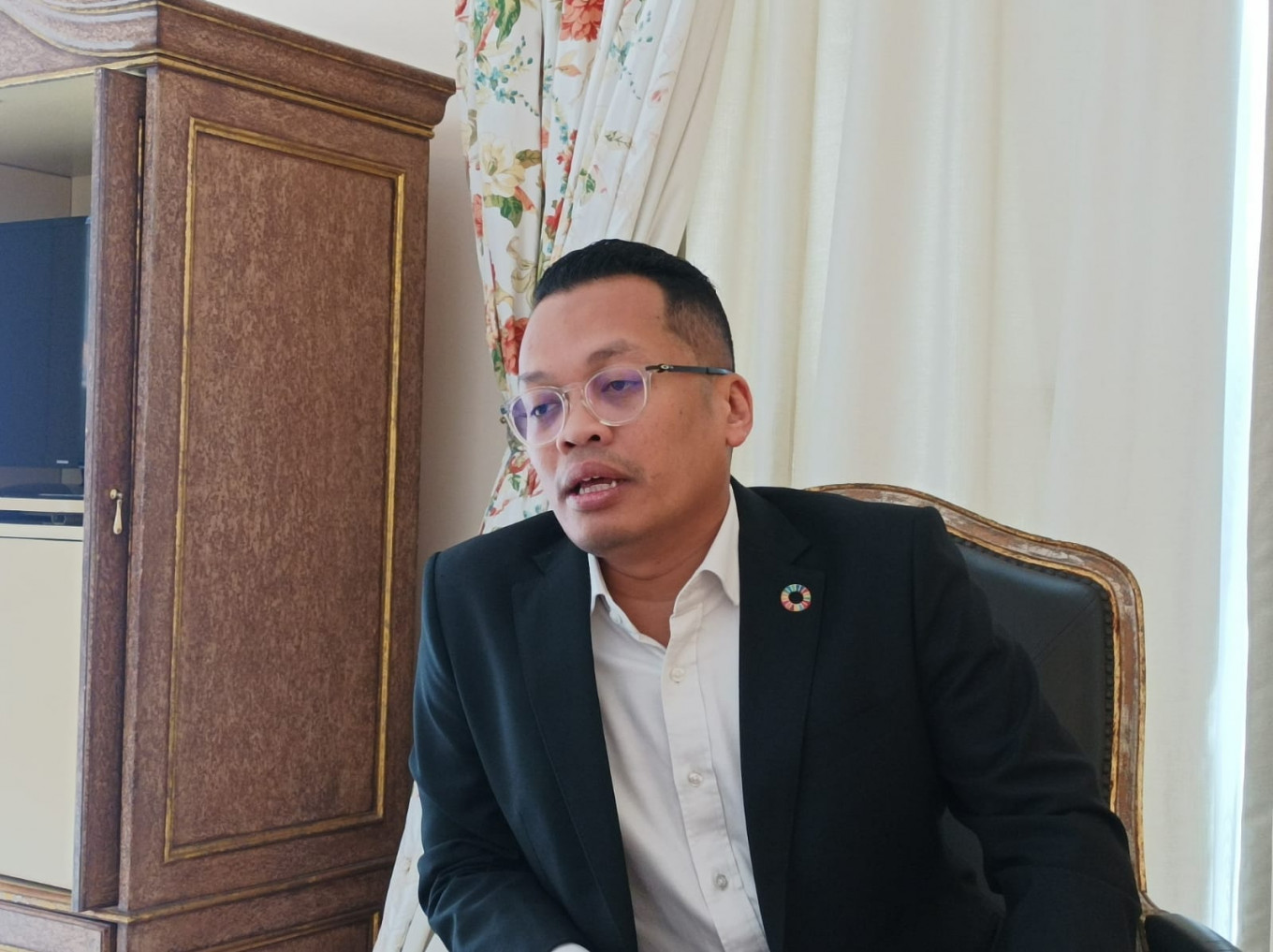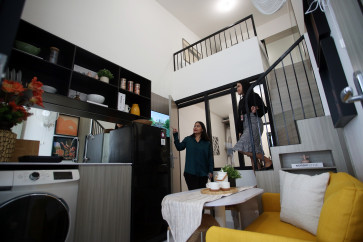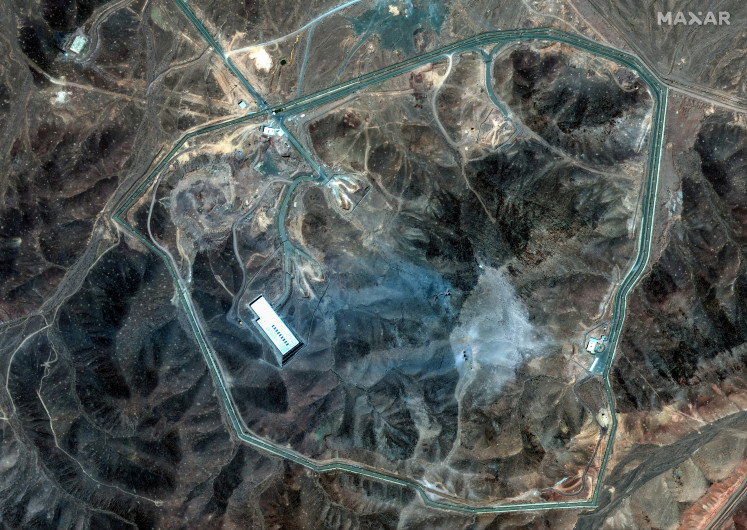Popular Reads
Top Results
Can't find what you're looking for?
View all search resultsPopular Reads
Top Results
Can't find what you're looking for?
View all search resultsMalaysia eyes ASEAN grid as it aims to be the region’s renewable hub
Nik Nazmi bin Nik Ahmad discusses Malaysia's future EV plans, Tesla investment and his thoughts on the European Union's Critical Minerals Act and the United States' increasing protectionism on critical minerals
Change text size
Gift Premium Articles
to Anyone

M
alaysia's Minister of Natural Resources, Environment and Climate Change, Nik Nazmi bin Nik Ahmad, sat down with The Jakarta Post’s Vincent Fabian Thomas and Yohana Belinda on Aug. 23.
Nik Nazmi explained some of his thoughts on the challenges to erecting an ASEAN grid, the reason Malaysia has decided to export its electricity and the country’s plans to ramp up the use of electric vehicles (EVs), as well as issues relating to critical minerals and the energy transition.
The following are excerpts from the interview, which was conducted during Nik Nazmi's visit to Jakarta, before he attended the 41st ASEAN Ministers on Energy Meeting (AMEM).
Question: Why is Malaysia promoting EVs? How do they contribute to reducing national emissions?
Answer: Electrification as a whole will help in our target to achieve net zero at the earliest by 2050. Electrification of transportation is one part, but you also need to clean up on the generation, so that's down to renewables and energy efficiency.
If you ask me obviously the best transport would be electric railways.
We are not saying that EVs are the only solution, but we know some people need them due to the nature of their jobs that require EVs.
We know there is still room for EVs and we also have a big automotive industry with a lot of assembly plants, like Indonesia.
Malaysia has Tesla distribution centers. Does Malaysia also want Tesla to construct factories there?
To have the second-cheapest Tesla [model available for sale] in the world is a big breakthrough. But we are also looking at Tesla because of what they offer in terms of EV charging systems.
We have a target, which we still have to work hard on, it is to have 10,000 charging stations by 2025, we still have a long way to go.
Tesla is also involved in batteries that will have implications not just for EVs per se, but to supplement our solar panels that will need batteries in the future.
We're quite excited about the Tesla investment. I think the leading ministry for that is the Ministry of Industrial Investment, Trade and Industry (MITI).
Should ASEAN countries be more open to trading renewable electricity?
Well that that is a decision that every country will have to make based on their own circumstances.
ASEAN has always been talking about ASEAN power grid for many years, but I guess previously, with the prices and all, it did not make sense to sell [electricity] abroad, especially if the government is subsidizing it in a big way. It is difficult to justify the cost of trading in electricity.
Singapore is a developed city state with a lot of demand. It has been talking to Australia about getting submarine cables, to Cambodia and Sarawak, Malaysia. We thought it doesn't make sense if peninsula Malaysia, which is less than a kilometer from Singapore, is not looking at this.
By getting Singapore prices, we can charge a bit more than what we are getting in Malaysia, then we can do things which were previously not economical.
That is why we think that renewable energy exports are important and we believe that it should be realized through the ASEAN power grid.
In the ASEAN Ministerial Meeting on Energy, we will discuss further the start of a Malacca, Sumatra interconnection. We are going to do more research on that, strengthen the LTMS (Laos, Thailand, Malaysia, Singapore).
But, if there is some connection between all the four countries, we want the Brunei Darussalam–Indonesia–Malaysia–Philippines East ASEAN Growth Area (BIMP-EAGA).
But it will take time. You have to do proper studies, the cost is not cheap, a lot of capital investment.
We want to make Malaysia the hub of renewable energy. If you study the ASEAN map, some of the interconnections will run through Malaysia.
Does Malaysia have a plan to retire its fossil fuel power facilities and expect similar aid from the JETP or ETM?
We are looking at the possibility of getting proposals from the players on how they can either financially structure an early retirement of coal plants. They're expecting returns over the next 20 years. So how do we get out of it, say 10 years earlier?
Or, secondly, we can also look at mothballing. The plants are still in operation, but the generation has been reduced to a minimum.
If you are a purist, you may not like that. It’s still there, but there are concerns about energy security.
If we close our coal plants, there will be a time when we will actually import gas. Maybe we can cope at today’s prices, but we don’t know, someday it could be very expensive.
So I think that is an option that may be realistic.
What’s your view on the EU's Critical Minerals Act and US Inflation Reduction Act, in terms of rising protectionism on critical minerals?
I think we should just be smart and try to get the best offer from people who want to invest and not just export the raw materials.
People have to realize that ASEAN has developed very far. We have our own aspirations and capacity. We want to develop our own terms.
In Malaysia, we're now going to approve the policy to ensure that as much of the midstream, or maybe all midstream and as much of the downstream, is done in Malaysia.
For me, whoever wants to come here, you [must] make the best offer, including a willingness to open up downstream in Malaysia. Don’t expect us to give it to you on the cheap.









